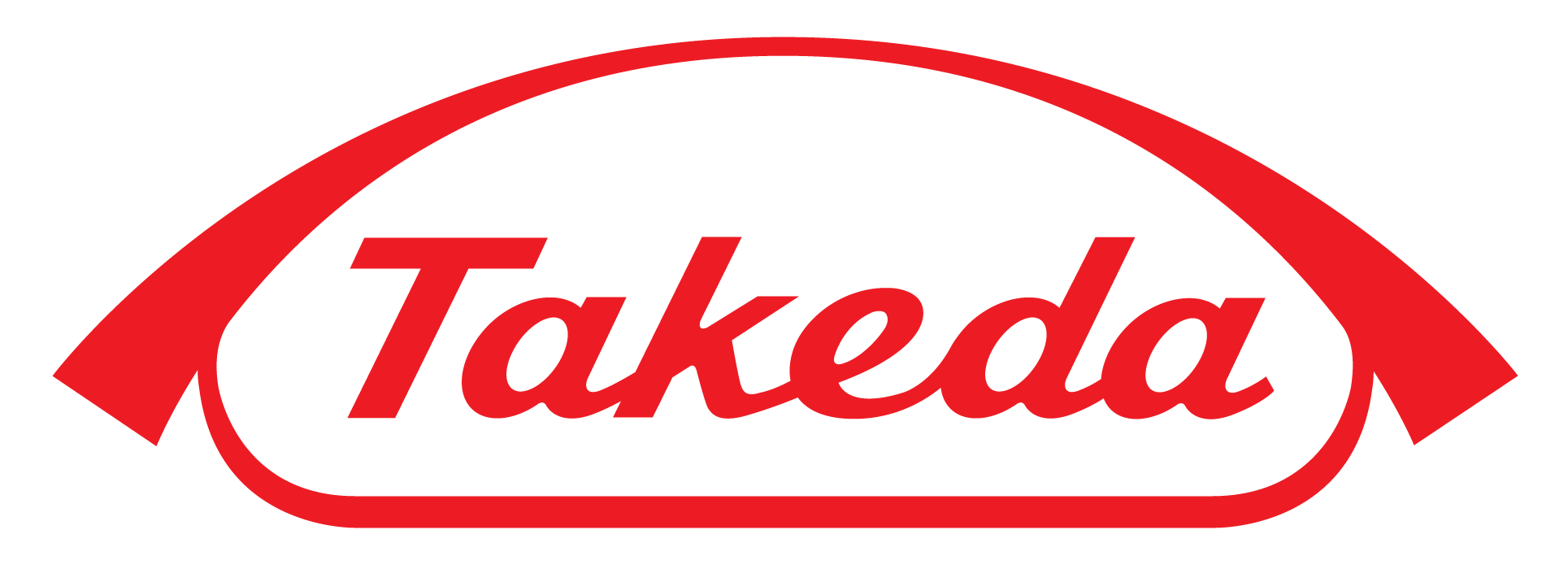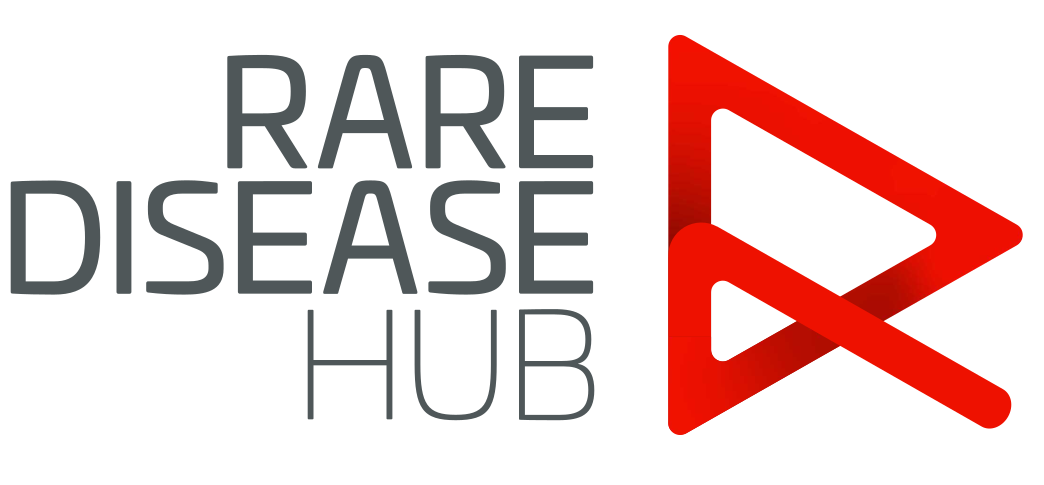
EBMT 2023 Highlights
Summary of highlights from EBMT 2023 in Paris, France, 23-26 April from Dr Varun Mehra and Dr Mickey Koh.
Understand the unmet needs from currently available anti-cytomegalovirus (CMV) agents in the context of the high burden of CMV infection and a retrospective chart review of transplant recipients with CMV infection who received LIVTENCITY®▼ (maribavir) in the phase 3 SOLSTICE trial in HSCT recipients with refractory CMV.
Abstract 1 – Dr Varun Mehra
Sign in to watch the summary video
P409 multinational study of treatment practices and outcomes for allogeneic hematopoietic stem cell transplant recipients with post-transplant cytomegalovirus.
CMV viraemia post HSCT remains an important factor for morbidity and mortality, with most centres practicing pre-emptive therapy (PET), however practices differ variably among centres. Einsele & Hirji et al. presented a multicentre retrospective real-world data from 13 transplant centres across EU and US analysing differences in practices in PET for CMV infection, including treatment pattern, duration of therapy and CMV outcomes (viraemia clearance, recurrence [CMV episodes following index episode], myelosuppression events, mortality). The authors report data on 140 patients (US n=37, EU n=103), who had at least one PET and had follow up >12 months or until death, over a 5-year period. Pts were followed until death or end of study (Dec 2021) with a median age: 57.5 yrs.
With a median follow-up of 16 months post-HSCT, only ¼ patients were given CMV primary prophylaxis (24.3%) with secondary prophylaxis following an index event was given in 25.7% of patients. Letermovir was used as primary prophylaxis for 9 pts only (US 3, EU 6). Median time from HSCT until index episode was 39.0 days. For the index episode post-HSCT, Valganciclovir (VGC) was used as PET in 49.3% of pts and Ganciclovir (GCV) in 7.9% of patients (10% were given VGC/GCV in sequence or combination). Remaining patients were given Foscarnet (12.9%) or other agents. Mean duration of treatment (including dose holds) for 1L VGC use was 34.9 (SD ±23.9) d. A second-line (2L) treatment was required for 31 pts (22.1%) for the index episode, with median time of 13 days (range 6-36) to initiation of 2L treatment.
Overall, 114 pts (81.4%) achieved viraemia clearance during the index episode. Median time from PET initiation to CMV clearance was 29.5 d with 78% patients achieving viraemia clearance by 8 weeks after initiation of PET. A total of 46 pts (32.9%) experienced CMV recurrence with a median time of 32.5 days to first recurrence. Following PET initiation, 22.9% of pts experienced ≥1 myelosuppression event, mainly reported while receiving VGC (65.6%), GCV (12.5%), and foscarnet (9.4%). At 1 year after PET initiation, 32 pts (22.9%) died. All-cause mortality after PET initiation was 35.7%, and among pts with a single CMV episode was 29.8% compared with 47.8% in pts with recurrent episodes.
The authors conclude that one-third of pts are managed pre-emptively with therapy other than VCG/GCV, and with conventional anti-CMV therapy, approximately one-third experience CMV recurrence. These results highlight the variability in PET practices among centres and different treatment options used. There is strong need for using effective prevention and management strategies of CMV post-HSCT, with the aim of reducing long-term burden and complications.
References - Abstract 1
Papanicolaou G et al. (2023). P409 multinational study of treatment practices and outcomes for allogeneic hematopoietic stem cell transplant recipients with post-transplant cytomegalovirus. EBMT 49th Annual Meeting 23rd to 26th April 2023.
Abstract 2 – Dr Mickey Koh
Sign in to watch the summary video
P899 retrospective chart review of transplant recipients with cytomegalovirus infection who received maribavir in the phase 3 SOLSTICE trial: data at 52 weeks post-maribavir treatment initiation.
Cytomegalovirus (CMV) infection is a frequent complication in haematopoietic stem cell and solid organ transplant (HSCT/SOT) recipients and has been associated with poor clinical outcomes and mortality. Previous literature have reported mortality rates of 31% to 50% in mixed HSCT/SOT recipients who received treatment with conventional anti-CMV therapies for refractory CMV infection with or without resistance (R/R)1,2. The options for these pre-existing therapies have also been recognised to be suboptimal due to varying efficacies, association with significant toxicities and emergence of resistance. The SOLSTICE trial was a Phase 3, international multi-centre randomised open label trial which compared a different agent maribavir against standard of care in this cohort of HSCT/SOT recipients with refractory CMV infection3. This study met its primary endpoints and demonstrated that significantly more patients in the maribavir arm achieved CMV clearance at the end of Week 8 vs patients in the investigator-assigned therapy (IAT) group (55.7% vs 23.9%, respectively). Fewer patients also discontinued treatment due to treatment-emergent adverse events with maribavir than IAT (13.2% vs 31.9%, respectively).
The primary objective of this poster abstract by I. Hirji et al. presented at EBMT was to evaluate mortality and graft status at 52 weeks post-maribavir treatment initiation in a sub-cohort of HSCT and SOT recipients from the SOLSTICE trial. This was not previously analysed in the trial due to the shorter period of follow up. This was an observational, multi-country, non-interventional, retrospective, medical chart review study. 109 patients were enrolled onto this study (68 SOT and 41 HSCT) with a median age of 56.0 years (SOT=55.0; HSCT=59.0). At 52 weeks, the overall mortality rate was 15.6% (17/109) and survival probability was 0.84. Among SOT recipients, 3 (4.4%) deaths were observed during the chart review period with the causes of death CMV-related, anaemia, and renal failure (n=1 each). Among HSCT recipients, 14 (34.1%) deaths were observed; 8 occurred during SOLSTICE and 6 additional deaths were observed during the chart review period. The causes of death for HSCT recipients were underlying disease relapse (n=4), infection other than CMV (n=6), CMV-related factors, transplant-related factors, acute lymphoblastic leukaemia, and septic shock (n=1 each).
The overall mortality at 52 weeks post-maribavir treatment initiation in this sub-cohort of patients from the SOLSTICE trial was encouragingly lower than that reported for similar populations treated with conventional therapies for R/R CMV infection. It should be noted that while the results for SOT recipients are encouraging, the mortality rate for HSCT patients remains significant although it is noted that disease relapse accounted for 12% of the mortality and infectious complications other than CMV 17%. This study was not designed to investigate the relationship of CMV and CMV viral clearance with other transplant related outcomes like relapse and graft versus host disease. Nonetheless, these results cautiously interpreted, together with the superior efficacy in CMV clearance observed for maribavir in SOLSTICE provide support for the use of maribavir in post-transplant refractory CMV infection.
References - Abstract 2
Hirji I et al. (2023). P899 retrospective chart review of transplant recipients with cytomegalovirus infection who received maribavir in the phase 3 solstice trial: data at 52 weeks post-maribavir treatment initiation. EBMT 49th Annual Meeting 23rd to 26th April 2023.
In text:
1. Avery RK et al. (2016). Outcomes in Transplant Recipients Treated With Foscarnet for Ganciclovir-Resistant or Refractory Cytomegalovirus Infection. Transplantation; 100(10): e74-80.
2. Mehta Steinke SA et al. (2020). Outcomes of transplant recipients treated with cidifovir for resistant or refractory cytomegalovirus infection. Transplant Infectious Disease; 23(3): e13521.
3. Avery RK et al. (2022). Maribavir for Refractory Cytomegalovirus Infections With or Without Resistance Post-Transplant: Results From a Phase 3 Randomized Clinical Trial. Clinical Infectious Diseases; 75(4): p.690-701.
Exploring cellular therapy as a promising option, learn more about potential biomarkers for future prolonged and symptomatic CMV reactivation and virus-specific T-Cells against ADV, EBV, and CMV in multi-treated post-HSCT patients.
Abstract 3 – Dr Varun Mehra
Sign in to watch the summary video
P399 CD4+T cells are the major predictor of HCMV control in allogeneic stem cell transplant recipients on letermovir prophylaxis.
With advent of CMV prophylaxis approach using letermovir as standard of care in CMV seropositive recipients of HSCT, early-onset CMV reactivations have become uncommon and in contrast, late-onset CMV reactivations have emerged as a frequent cause of CMV disease. It is known that delayed or dysfunctional CMV-directed T-cell responses and NK-cell reconstitution are the main risk factors for prolonged CMV viraemia and CMV disease in post HSCT. It has been suggested that the lack of CMV reactivation during letermovir prophylaxis and lack of immune exposure to CMV antigens can alter the reconstitution of T cells and NK cells. However, CMV-specific T-cell reconstitution kinetics and their impact on transplantation outcomes in patients on letermovir prophylaxis are poorly understood.
This single centre study (now published) by Lauruschkat and colleagues prospectively at NK-cell and T-cell repertoire of alloSCT recipients managed with pre-emptive therapy (n=32) or letermovir prophylaxis (n=24), characterised by flow cytometry on days +30, +60, +90 and +120 after alloSCT, between 2015 and 2019. PCR-guided pre-emptive therapy (PET) was used as the primary antiviral strategy until 12/2019 and letermovir (LET) prophylaxis was introduced in 01/2020. PET for hospitalized patients was started whenever CMV DNAemia exceeded 1,000 DNA copies/mL in the early cohort. In the LET cohort, letermovir prophylaxis was stopped whenever CMV DNAemia exceeded 1,000 DNA copies/mL, and systemic PET was initiated. The two groups did not differ significantly in terms of baseline patient characteristics (age, sex, underlying disease, donor type, donor HCMV status, stem cell source, conditioning regimen, HCT-CI score) and duration of follow-up.
A sub-analysis was performed after subdividing alloSCT recipients receiving letermovir prophylaxis or pre-emptive therapy into non/short-term CMV reactivating (NSTR) and long-term CMV reactivating (LTR) patients. NSTR patients were defined as those with no HCMV disease and no more than one CMV reactivation shorter than three weeks. LTR patients included those with CMV end - organ disease, more than one reactivation, or a single reactivation exceeding the aforementioned duration.
Fourteen out of 32 patients (43.8%) in the PET group showed LTR, while 7 out of the 24 patients (29.2%) in the LET group showed LTR, resulting in comparable reactivation rates until day +365 (p=0.40). Patients receiving PET and LET who suffered from LTR had significantly higher CMV peak loads until day +365 (p<0.001) than NSTR patients, although LET patients had no difference in peak viral loads between LTR and NSTR groups at Day 120 compared to PET treated cohort, which had significant differences, suggesting early suppression of viral replication on LET prophylaxis.
In terms of immune reconstitution, LET prophylaxis resulted in decreased T-cell numbers but increased NK-cell numbers. Interestingly, despite the inhibition of CMV, authors found high numbers of “memory-like” (CD56dimFcεRIγ- and/or CD159c+) NK cells and an expansion of CMV-specific CD4+ and CD8+ T cells in LET recipients. Median CMV-specific CD4+ T-cell frequencies were significantly higher in NSTR patients (day +60, 0.35% vs. 0.00% CD4+IFNγ+/CD4+ cells, p=0.018) than in patients with LTR, whereas patients with LTR had significantly higher median regulatory T-cell (Treg) frequencies (day +90, 2.2% vs. 6.2% CD4+CD25+CD127dim/CD4+ cells, p=0.019). ROC analysis confirmed low HCMV specific CD4+ (AUC on day +60: 0.813, p=0.019) and high Treg frequencies (AUC on day +90: 0.847, p=0.021) as significant predictors of prolonged and symptomatic HCMV reactivation.
Patients receiving pre-emptive therapy, who only showed NSTR, had increased numbers of all three populations of CD4+T-cell subtypes (Cytotoxic, memory and regulatory cells), indicating a balanced expansion of T-cell populations compared to the very limited T-cell expansion in LTR patients. In contrast, the authors found significantly increased numbers and frequencies of total Tregs in LTR patients on letermovir prophylaxis compared to NSTR patients, suggesting that Tregs might promote long-term CMV reactivation in a setting of letermovir prophylaxis.
From clinical outcomes viewpoint, the authors share that among the patients who received PET, a total of 14 developed LTR. Out of these 14 patients, 4 went on to develop an CMV disease and the one-year mortality rate for this group was 50%. In contrast, 7 patients who received LET developed LTR, with 3 of them developing EOD. The one-year mortality rate for this group was 14%. Although they did not test for resistance to anti-CMV treatment, it is worth noting that many of the LTR patients showed persistent CMV reactivation despite receiving anti-CMV treatment. Therefore, it is possible that CMV resistance to the administered drugs could have occurred.
Although limited by small numbers and limited observation period for CMV events in the study, the authors conclude that high numbers of CMV-specific CD4+ T cells and low numbers of Tregs seem to be pivotal to suppress post-alloSCT HCMV reactivation during letermovir prophylaxis. Immunoassays using Treg signature cytokines might contribute to the identification of patients at high-risk for long-term and symptomatic HCMV reactivation. Limitation of extended prophylaxis to alloSCT recipients at particularly high risk for LTR and disease, identified by immunoassays, might be an attractive and possibly more cost-effective future approach. This needs to be studied in more detail on a longer observation period with questions around risk of resistance development in patients who develop LTR on standard approaches compared to those with extended LET prophylaxis.
References - Abstract 3
Lauruschkat D et al. (2023). CD4+ T cells are the major predictor of HCMV control in allogeneic stem cell transplant recipients on letermovir prophylaxis. Front. Immunol.; 14:1148841.
Abstract 4 - Dr Mickey Koh
Sign in to watch the summary video
P236: Virus specific T-cells against ADV, EBV and CMV in infected multi-treated post-HSCT patients.
Post-transplant viral (adenovirus ADV, CMV or EBV) replication/disease remains a major complication post allogeneic stem cell transplantation (allo-HSCT). Anti-viral medicines can be effective but some have traditionally been associated with significant toxicity (ganciclovir and cytopenias; foscarnet and renal impairment). The use of cellular therapy in the form of virus-specific T cells (VST) is therefore a promising option especially with the impressive success of chimeric antigen receptor T cells (CAR-T) in lymphoid malignancies.
This poster abstract by Hazane Leroyer et al. reports on a single centre experience in France obtained authorisation for generation of VSTs as advanced-therapy medical products (ATMP) to treat 29 recipients of allo-HSCT. This consisted of polyclonal ADV-VST (n=13), CMV-VST (n=7), EBV-VST (n=8) and both ADV-VST and CMV-VST (n=1). The VSTs were generated using a Miltenyi commercial platform consisting of a 6-hour ex vivo stimulation with an appropriate peptide pool and isolation by a CliniMACS immunomagnetic selection using the IFN-γ capture system. These VST were derived from the original stem cell donor (n=13) or with a 3rd party haploidentical donor (n=16). This study included paediatric and adult patients (median age 14 years old) and all patients had prior treatment with conventional antivirals with the mean number of previous therapeutic lines: 2 for ADV, 3 for CMV and 1 EBV patients, respectively. The median CD3-IFN-γ T-cells (10e4/kg) infused was 0.25 for ADV-VST, 1.01 for CMV-VST and 0.79 for EBV-VST.
Responders as defined by complete clearance of virus (CR) and more than 1 log (PR) at 1 month represented 64% of the 25 patients still alive (p<0.001). The mean viral load at the day of VST infusion (D0) and the median CD3+T cells were not significantly different between CR/PR and non-responders (NR) patients. There was no difference in response with regards to donor source with 61% responders from haploidentical donor’s VSTs. Six de novo cases of GVHD (23%) were reported up to 3 months. Overall survival was 54% and 35% at 3 and 12 months post-infusion, respectively, and was significantly higher when D0 viral load was ≤3.75 log (p<0.05). The first cause of death in the 3 months following VST infusion was the initial virus related replication/disease (n=8). After 3 months, causes of death were HSCT toxicity related mortality (n=4), septic shock (n=2), mixed hepatopathy (ADV replication and hepatic GVHD) (n=1), and relapse from initial disease (n=2).
Overall, this small study provides further evidence to the available literature and data that cell based therapeutics is a potentially promising addition for the treatment of post transplant viral replication/disease. The study limitation of a descriptive single centre retrospective experience with a modest number of patients means it is difficult to interpret efficacy compared to conventional anti-virals. Equally, the safety profile looks promising although it is not possible to extrapolate any possible relationship of the VSTs, especially those from the 3rd party haploidentical donor with the incidence of GVHD as other important parameters including disease type and conditioning regimens are not described. Cost and whether one is able to generate such VSTs in every patient will also be important factors in consideration for this modality of treatment.
References - Abstract 4
Leroyer EH et al. (2023). P236: Virus specific T-cells against ADV, EBV and CMV in infected multi-treated post-HSCT patients. EBMT 49th Annual Meeting 23rd to 26th April.
Learn more about the new ECIL recommendations on how to prevent and treat toxoplasmosis in HSCT patients and the use of autologous HSCT vs CAR-T cells in Diffuse Large B cell Lymphoma (DLBCL).
Abstract 5 – Dr Varun Mehra
Sign in to watch the summary video
IDWP-3 How to prevent and treat toxoplasmosis in HSCT patients - New ECIL recommendations.
Patients with haematological malignancies may develop life-threatening toxoplasmosis, especially after allogeneic haematopoietic stem cell transplantation (allo-HSCT). Almost all cases of toxoplasmosis in haematology have been reported following (allo-HSCT), with only anecdotal references in other settings. Reactivation of latent cysts is the primary mechanism of toxoplasmosis following HSCT; hence, at-risk patients are those who were seropositive before transplantation. The large variation in seroprevalence across countries may explain the varying levels of awareness of toxoplasmosis within the transplant community. The non-administration of cotrimoxazole prophylaxis and various immune status parameters of the patient are other risk factors. The mortality rate of toxoplasma disease - e.g. with organ involvement - may be particularly high in this setting. Although there are many guidelines for managing post-HSCT infections, there were previously no specific guidelines for toxoplasmosis in this population.
The European Conference on Infections in Leukaemia-9 (ECIL-9) has developed specific detailed guidelines for managing toxoplasmosis in haematology wards, including prophylactic, pre-emptive, and curative treatments, applicable for both adults and children, provided with appropriated dose adaptations.
The pre-emptive approach using qPCR screening during the first months of transplant may early identify toxoplasma infection, which usually precedes the development of the disease. Despite the dearth of randomised studies on the benefits of this approach, the ECIL-9 expert group consider this is - with drug prophylaxis – the only way to decrease the incidence of toxoplasma disease and subsequent morbidity and mortality. Because drug prophylaxis is not optimal, even with drugs like Co-trimoxazole, PCR screening and prophylaxis should be combined in R+ patients. Quantitative PCR is the key tool for managing these patients. The prophylaxis and treatment guidance is however primarily based on HIV studies and using limited published experience in HSCT patients.
Transplant centres with no PCR on site should consider sending samples to a reference centre. The ECIL-9 strongly encourage prospective studies on optimising the minimal dose of TMP-SMX, providing a dual prevention for PcP and toxoplasmosis, evaluating the kinetics of the immune reconstitution against toxoplasma, assessing new antitoxoplasma drugs, and integrating toxoplasma markers into laboratory panels investigating infectious symptoms in immunocompromised patients. The ECIL-9 guideline is currently under editorial revision process for publication and summary guidance can be accessed on ECIL platform: (https://www.ecil-leukaemia.com/en/resources/resources-ecil).
References - Abstract 5
Cordonnier C (2023). IDWP-3 How to prevent and treat toxoplasmosis in HSCT patients - New ECIL recommendations. EBMT 49th Annual Meeting 23rd to 26th April.
Abstract 6 - Dr Mickey Koh
Sign in to watch the summary video
W06-1 Auto HSCT vs CAR-T cells in Diffuse Large B cell Lymphoma (DLBCL).
Autologous stem cell transplantation (auto HSCT) has remained the standard of care for patients with refractory/relapsed DLBCL after 1st line chemo/immunotherapy. Although an effective and safe strategy, this does depend on the individual patient being fit enough for such an approach due to the intensive chemotherapy given and its associated risks including immune suppression. Overall, about 50% of patients fit and triaged to auto HSCT could expect a cure with this strategy. The other major problem with auto HSCT is its inability to overcome chemotherapy-resistant disease.
The treatment paradigm for DLBCL has substantially changed since the approval of anti-CD19 chimeric antigen receptor T-cell (CAR-T) therapy. Anti-CD19 CAR-T therapy was first approved for relapsed DLBCL after two or more previous lines of therapy with attainment of long-lasting responses and over 50% of patients still alive at 5-year follow-up. Recent large randomized phase 3 clinical trials using axicabtagene ciloleucel (ZUMA-7)1 and lisocabtagene maraleucel (TRANSFORM)2 in the second-line therapy setting compared with the standard of care in transplant-eligible patients who have R/R DLBCL within 12 months of completing chemo-immunotherapy have demonstrated clear and significant improvements in overall survival and event free survival. The median EFS was 8.3 vs 2.0 months with axi-cel and SOC, respectively and the 2-year EFS rate was 41% with axi-cel vs 16% with SOC. This has led to the recent approval of anti-CD19 CAR-T cells as 2nd line use in patients with DLBCL for those who have relapsed within 12 months from completion of, or are refractory to, first-line chemoimmunotherapy. This has the potential and is likely to radically alter the treatment algorithm for DLBCL.
Thieblemont C presented a lecture on the decision making involved when treating such a patient with R/R DLBCL in the 2nd line setting. There remains distinct non - overlapping areas where auto HSCT and CAR-T therapy will remain the treatment of choice. Auto-HSCT will continue to be the standard of care for patients with DLBCL who relapsed more than 12 months after completing therapy. For patients who have been deemed medically unfit or ineligible for ASCT, CAR-T therapy will now emerge as a potentially life-saving and curative measure for these patients unable to proceed on with a consolidation auto HSCT. Equivalently, in current clinical practice, medically fit patients originally planned for an auto HSCT but who do not achieve remission following salvage chemotherapy should not proceed onto an auto HSCT due to its ineffectiveness in this situation. These patients can now qualify for CAR-T treatment
The major overlapping area for decision-making would be those patients who are medically fit for a transplant, who have relapsed within 12 months, and who do attain CR post-salvage chemotherapy. Other important considerations will include the knowledge and ability to treat the side effects and potential toxicity of each treatment modality as well as the time taken to access treatment including the need for manufacturing times and logistic considerations in the case of CAR-T. It is relevant that there are broader eligibility criteria for CAR-T compared to auto HSCT and therefore more patients, especially the elderly and with comorbidities will now be considered for CAR-T. It is also crucial to continue collecting results of safety and efficacy from real-world data.
References - Abstract 6
Thieblemont C (2023). W06-1 Auto HSCT vs CAR-T cells in Diffuse Large B cell Lymphoma (DLBCL). EBMT 49th Annual Meeting 23rd to 26th April.
In-text:
1. Locke FL et al. (2022). Axicabtagene Ciloleucel as Second-Line Therapy for Large B-Cell Lymphoma. N Engl J Med 2022; 386: 640-654.
2. Kamdar M et al. (2022). Lisocabtagene maraleucel versus standard of care with salvage chemotherapy followed by autologous stem cell transplantion as second-line treatment in patients with relapsed or refractory large B-cell lymphoma (TRANSFORM): results from an interim analysis of an open-label, randomised, phase 3 trial. The Lancet; 399(10343): p2294-2308.
The content from EBMT 2023 is created independently of Takeda.


